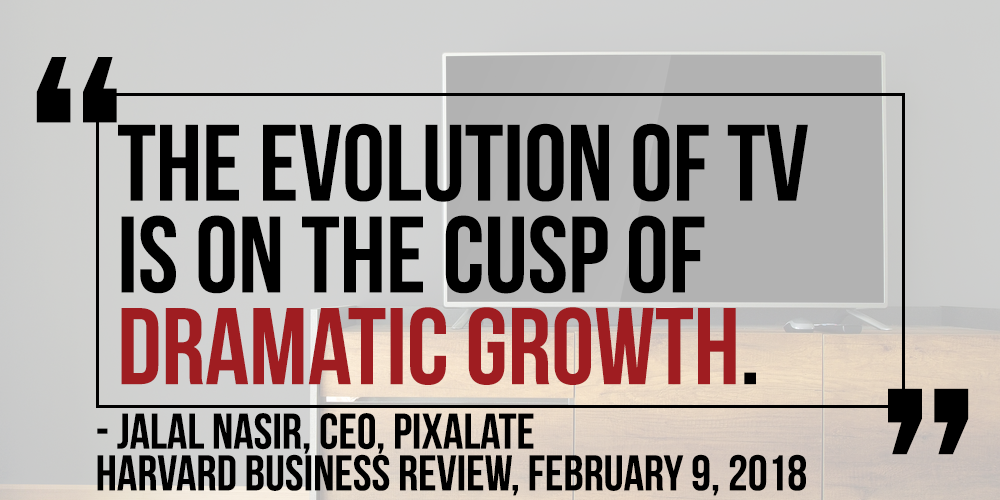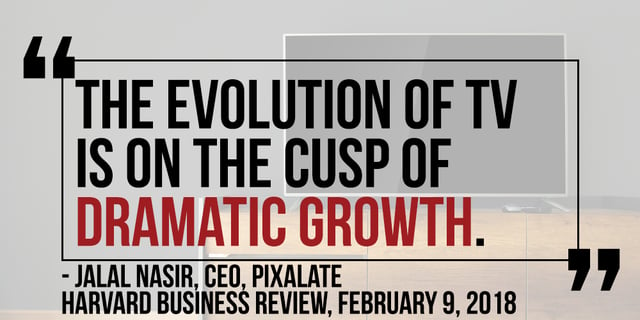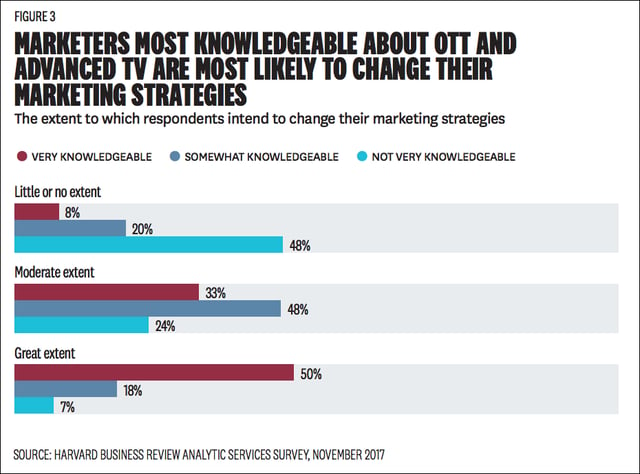


February 9, 2018 — By: The Harvard Business Review
The Harvard Business Review conducted a survey on marketing and the evolution of TV, sponsored by Google. "Television is in the midst of an enormous evolution where consumers can watch programming on any internet-connected device with a screen," wrote HBR.

"According to a Harvard Business Review Analytic Services survey and interviews with marketing experts, this evolution of TV will continue to march forward and offer marketers promising new opportunities to reach their audiences," the research report continued.
"For example, Jalal Nasir, founder and CEO of Pixalate, a firm specializing in providing fraud protection and analytics for advanced TV advertising, stresses that the evolution of TV is on the cusp of dramatic growth," the research report reads. "According to his firm’s research, 40% of U.S. households with an internet connection already own an internet-connected TV device. By 2020, that number is expected to climb to 80% or more."

According to a Harvard Business Review ("HBR") survey of 390 of its subscribers, the majority of the most knowledgeable marketers (as it pertains to Connected TV/OTT) expect to change their strategies to a "great extent" in the coming years as a result of the changing landscape.
"Marketing executives most familiar with the prospects of advanced TV are already making moves," wrote HBR. "These businesses are three times as likely to be changing strategies to a great extent in response to consumers watching network, cable, and other professionally produced video on devices other than traditional TV sets—50% versus an average of 14% compared to their less knowledgeable peers."
Sign up for our blog to stay updated with new stats, trends, and analysis on digital ad fraud.
*By entering your email address and clicking Subscribe, you are agreeing to our Terms of Use and Privacy Policy.
These Stories on Thought Leadership
*By entering your email address and clicking Subscribe, you are agreeing to our Terms of Use and Privacy Policy.

Disclaimer: The content of this page reflects Pixalate’s opinions with respect to the factors that Pixalate believes can be useful to the digital media industry. Any proprietary data shared is grounded in Pixalate’s proprietary technology and analytics, which Pixalate is continuously evaluating and updating. Any references to outside sources should not be construed as endorsements. Pixalate’s opinions are just that - opinion, not facts or guarantees.
Per the MRC, “'Fraud' is not intended to represent fraud as defined in various laws, statutes and ordinances or as conventionally used in U.S. Court or other legal proceedings, but rather a custom definition strictly for advertising measurement purposes. Also per the MRC, “‘Invalid Traffic’ is defined generally as traffic that does not meet certain ad serving quality or completeness criteria, or otherwise does not represent legitimate ad traffic that should be included in measurement counts. Among the reasons why ad traffic may be deemed invalid is it is a result of non-human traffic (spiders, bots, etc.), or activity designed to produce fraudulent traffic.”



